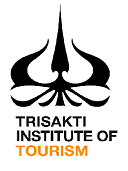Priority of Development Strategies for Wellness Tourism in Denpasar City
Abstract
Denpasar City is one of the tourist destinations in Bali that has the potential for wellness tourism. However, this potential is not in line with the development of wellness tourism in Denpasar City which has not been optimized. This study aims to determine the priority of wellness tourism development strategies in Denpasar City and map the implementation in the form of programs from the wellness tourism development strategy in Denpasar City. Data collection was carried out using in-depth interview techniques to 8 informants from the pentahelix concept who understand the condition of wellness tourism in Denpasar City, and then the data was analyzed using AHP (Analytical Hierarchy Process) analysis techniques. The results showed that the priority strategies for developing wellness tourism in Denpasar City are: (1) Provide regular special training to SPA therapists, yoga instructors from wellness tourism associations, as well as producers of herbs and medicines, (2) Create national or international scale events as a forum for promoting wellness tourism, (3) Develop wellness tourism products that utilize local spices in their activities, (4) Develop wellness tourism products combined with the beauty of the sea and rice fields in Denpasar City, (5) Development of Ayurveda-based wellness tourism products.
Keywords: wellness tourism, strategy priority, development strategy, strategy implementation, AHP










